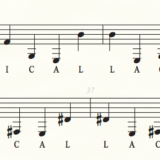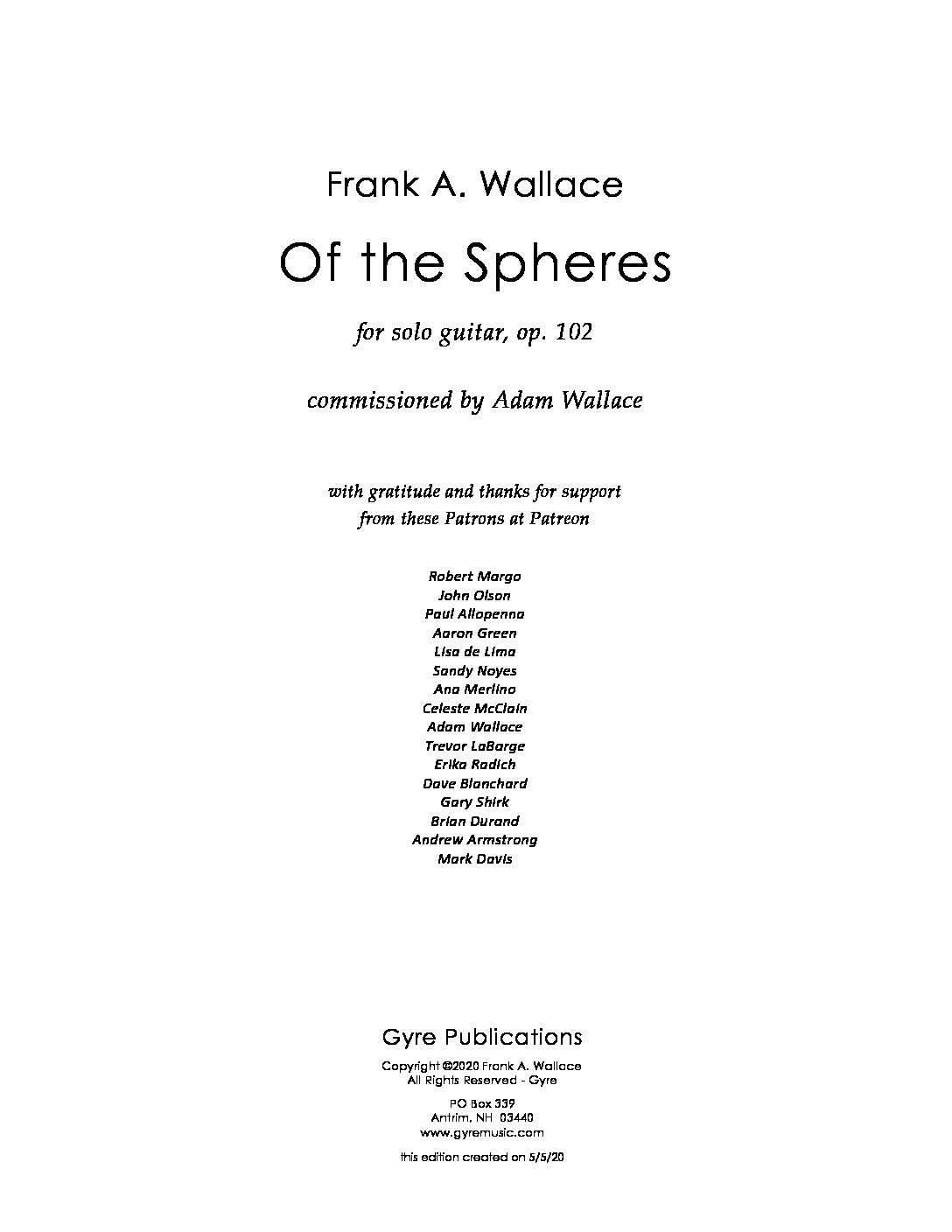Of the Spheres | for solo guitar by Frank A. Wallace
by Frank A. Wallace
for solo guitar
SUGGESTED DONATION: $8
Instrumentation: classical guitar
Duration: 8 minutes; 5 pages
Difficulty level: concert work
Written: February 2020
Commissioned by: Adam Wallace through Patreon
All Gyre compositions are ASCAP
Copyright ©2020 Frank A. Wallace
Cover photography and design by Nancy Knowles
All rights reserved.
Tweet
Background
My son is obsessed with spheres. Witness this sculpture he made in college some 15 years ago.

He named his company Spherical and travels the globe, this great and gorgeous sphere, constantly.
He is also one of my biggest fans and so I have written this piece in honor of him and in thanks for all he gives me: love, attention, lots of good laughs and even his patronage through Patreon.com, which is how this work came to fruition.
He’s basically a happy guy, loves life, and so I wanted to write him a happy piece. But I can’t say that’s my forte! I like the brooding moody stuff. To get a little guidance from chance, I assigned notes to the name Spherical and then turned them around in retrograde motion to symbolize a sphere. As explained on other pieces in which I used this technique, I generate both a diatonic and chromatic version;
Well, sadly for the happy idea, I fell in love with the more moody chromatic version and there the piece begins. It is after all a mild but difficult winter coping with major illness and frequent, stressful trips to Boston and other locales for treatments and assessments of my condition. Our sadness and the spiritual quest my family is engaged in seem to be what came to the fore in the music. And the work flowed very smoothly, so I could not doubt its veracity, its right to be.
And then, glad tidings! The second movement appeared in a dream and it is, more or less, a quirky dance movement. It’s fast and rhythmic, and I might even say happy.
Thanks Adam! And to Nancy and Gus and all my family for support and love and patience — OH MY GOD, the patience is astounding.
— Frank A. Wallace
Notes
Of the Spheres is the latest addition to my “avian” series. In this case, we have two sea-birds that migrate the farthest of any living birds. The first, Wandering Albatross, has the same instincts as my son, who loves to travel the globe. It flies constantly around the Southern Hemisphere and has the largest wingspan of any living bird, up to and more than 11 feet!
The bird that flies farthest is the Arctic tern, an elegant white seabird. This bird also sees more daylight than any other. The Arctic tern breeds on the shores of the Arctic Ocean in the Northern Hemisphere summer. And it feeds over the oceans of the Southern Hemisphere half a year later – in Southern Hemisphere summer. So, like many birds, this bird flies great distances every year to maintain its life of endless summertime. North American Arctic terns fly about 24,000 miles (40,000 km) each year. That’s a distance about equal to the distance around the Earth.
An Arctic tern can live for 25 years, so in its life-long quest for summer it can fly a million kilometers (620,000 miles) – nearly three times the distance from the Earth to the moon. By the way, there are about 120 migratory bird species with populations in the United States and south of the equator. Most of these species cross the equator during migration. For example, the red knot flies from New England to far southern South America.
Other birds stay in one hemisphere, but go farther. For example, the wandering albatross spends most of its life aloft, circling the world over the oceans of the Southern Hemisphere. It stops only to breed on storm-swept islands near Antarctica. A wandering albatross might fly 30,000 kilometers – that’s 18,000 miles – between breedings. So while the Arctic tern flies farthest of all birds, there are other bird species that come in a close second!





